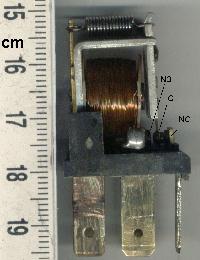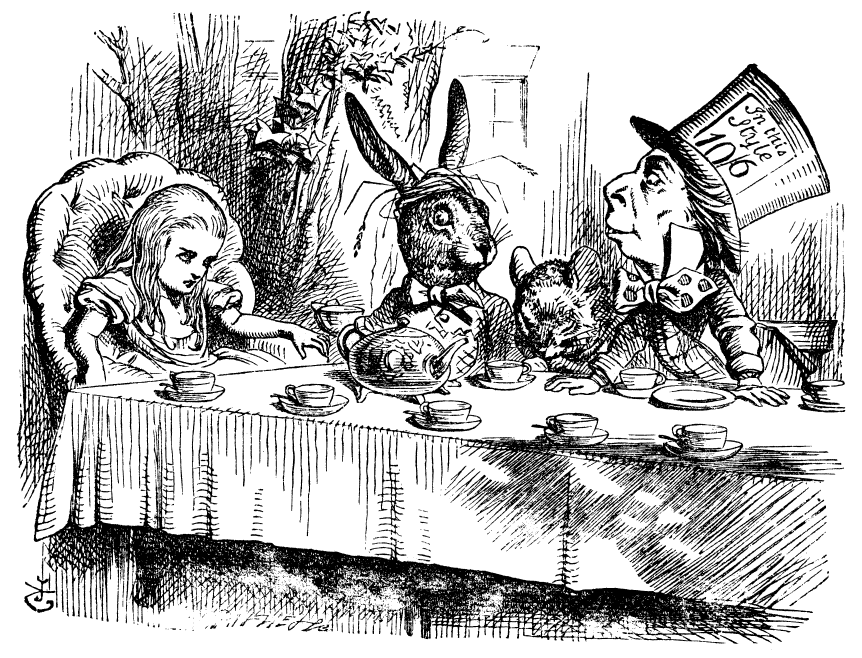|
Turbo Encabulator
The turbo encabulator is a fictional electromechanical machine with a satirical technobabble description that became a famous in-joke among engineers after it was published by the British Institution of Electrical Engineers in their '' Students' Quarterly Journal'' in 1944. Technical documentation has been written for the non-existent machine, and there are a number of parody marketing videos. History An early popular American reference to the turbo encabulator appeared in an article by New York lawyer Bernard Salwen in the April 15, 1946, issue of ''Time'' magazine. Part of Salwen's job was to review technical manuscripts, including an Arthur D. Little Industrial Bulletin which had reprinted Quick's piece, and he was amused enough by it to include the description in his article. In response to a letter printed in the May 6 issue of ''Time'' from W. E. Habig of Madison, N.J. asking "What is a 'dingle arm'?”, the editors described it as "An adjunct to the turbo-encabulator, ... [...More Info...] [...Related Items...] OR: [Wikipedia] [Google] [Baidu] |
Electromechanical
Electromechanics combine processes and procedures drawn from electrical engineering and mechanical engineering. Electromechanics focus on the interaction of electrical and mechanical systems as a whole and how the two systems interact with each other. This process is especially prominent in systems such as those of DC or AC rotating electrical machines which can be designed and operated to generate power from a mechanical process ( generator) or used to power a mechanical effect ( motor). Electrical engineering in this context also encompasses electronics engineering. Electromechanical devices are ones which have both electrical and mechanical processes. Strictly speaking, a manually operated switch is an electromechanical component due to the mechanical movement causing an electrical output. Though this is true, the term is usually understood to refer to devices which involve an electrical signal to create mechanical movement, or vice versa mechanical movement to create an ele ... [...More Info...] [...Related Items...] OR: [Wikipedia] [Google] [Baidu] |
Motor Control Center
A motor control center (MCC) is an assembly to control some or all electric motors in a central location. It consists of multiple enclosed sections having a common power bus and with each section containing a combination starter, which in turn consists of motor starter, fuses or circuit breaker, and power disconnect. A motor control center can also include push buttons, indicator lights, variable-frequency drives, programmable logic controllers, and metering equipment. It may be combined with the electrical service entrance for the building. MCC's are typically found in large commercial or industrial buildings where there are many electric motors that need to be controlled from a central location, such as a mechanical room or electrical room. Voltage ranges Motor control centers are usually used for low voltage three-phase alternating current motors from 220V to 600 V. Medium-voltage motor control centers are made for large motors running at 2300 V to around 15000 V, using vac ... [...More Info...] [...Related Items...] OR: [Wikipedia] [Google] [Baidu] |
Hoaxes In The United States
A hoax (plural: hoaxes) is a widely publicised falsehood created to deceive its audience with false and often astonishing information, with the either malicious or humorous intent of causing shock and interest in as many people as possible. Some hoaxers intend to eventually unmask their representations as having been a hoax so as to expose their victims as fools; seeking some form of profit, other hoaxers hope to maintain the hoax indefinitely, so that it is only when skeptical people willing to investigate their claims publish their findings, that the hoaxers are finally revealed as such. History Zhang Yingyu's ''The Book of Swindles'' ( 1617), published during the late Ming dynasty, is said to be China's first collection of stories about fraud, swindles, hoaxes, and other forms of deception. Although practical jokes have likely existed for thousands of years, one of the earliest recorded hoaxes in Western history was the drummer of Tedworth in 1661. The communication of h ... [...More Info...] [...Related Items...] OR: [Wikipedia] [Google] [Baidu] |
Fictional Technology
Technology in science fiction is a crucial aspect of the genre. As science fiction emerged during the era of Industrial Revolution, the increased presence of machines in everyday life and their role in shaping of the society was a major influence on the genre. It appeared as a major element of the Proto SF, represented by machines and gadgets in works of Jules Verne, George Griffith, H. G. Wells, Edward Bellamy and others. Technology has been portrayed both in positive or negative ways; in some works it is a solution to the world problems, in others, a means of its destruction. Such things as robots and space travel became commonplace in the fiction of the 19th century. Concepts and illustrations of technology in science fiction have been a significant influence in the formation of popular culture images of future technology. Science fiction has often affected innovation and new technology – for example many rocketry pioneers were inspired by science fiction. See also ... [...More Info...] [...Related Items...] OR: [Wikipedia] [Google] [Baidu] |
Fictional Objects
Fiction is any creative work, chiefly any narrative work, portraying individuals, events, or places that are imaginary or in ways that are imaginary. Fictional portrayals are thus inconsistent with fact, history, or plausibility. In a traditional narrow sense, fiction refers to written narratives in prose often specifically novels, novellas, and short stories. More broadly, however, fiction encompasses imaginary narratives expressed in any medium, including not just writings but also live theatrical performances, films, television programs, radio dramas, comics, role-playing games, and video games. Definition and theory Typically, the fictionality of a work is publicly expressed, so the audience expects a work of fiction to deviate to a greater or lesser degree from the real world, rather than presenting for instance only factually accurate portrayals or characters who are actual people. Because fiction is generally understood as not adhering to the real world, the t ... [...More Info...] [...Related Items...] OR: [Wikipedia] [Google] [Baidu] |
Tech Humour
Tech or The Tech may refer to: * An abbreviation of technology or technician *Tech Dinghy, an American sailing dinghy developed at MIT *Tech (mascot), the mascot of Louisiana Tech University, U.S. * Tech (river), in southern France * "Tech" (''Smash''), a 2012 episode of TV series ''Smash'' * ''The Tech'' (newspaper), newspaper at the Massachusetts Institute of Technology * The Tech Interactive, formerly The Tech Museum of Innovation, or The Tech, a museum in San Jose, California, U.S. * Tech Tower, a building at the Georgia Institute of Technology, Atlanta, Georgia, U.S. See also * USS ''Tech Jr.'' (SP-1761), a United States Navy patrol boat in commission in 1917 * USS ''Tech III'' (SP-1055), a United States Navy patrol boat in commission in 1917 *Technical (other) *Technique (other) Technique or techniques may refer to: Music * The Techniques, a Jamaican rocksteady vocal group of the 1960s *Technique (band), a British female synth pop band in the 1990s * ' ... [...More Info...] [...Related Items...] OR: [Wikipedia] [Google] [Baidu] |
Journal Of Chemical Education
The ''Journal of Chemical Education'' is a monthly peer-reviewed academic journal available in both print and electronic versions. It is published by the Division of Chemical Education of the American Chemical Society The American Chemical Society (ACS) is a scientific society based in the United States that supports scientific inquiry in the field of chemistry. Founded in 1876 at New York University, the ACS currently has more than 155,000 members at all ... and was established in 1924 by Neil Gordon. The journal covers research on chemical education, and its target audience includes instructors of chemistry from middle school through graduate school and some scientists in commerce, industry, and government. References External links * Chemical education journals American Chemical Society academic journals Monthly journals Academic journals established in 1924 English-language journals {{chemistry-journal-stub ... [...More Info...] [...Related Items...] OR: [Wikipedia] [Google] [Baidu] |
Springer Science+Business Media
Springer Science+Business Media, commonly known as Springer, is a German multinational publishing company of books, e-books and peer-reviewed journals in science, humanities, technical and medical (STM) publishing. Originally founded in 1842 in Berlin, it expanded internationally in the 1960s, and through mergers in the 1990s and a sale to venture capitalists it fused with Wolters Kluwer and eventually became part of Springer Nature in 2015. Springer has major offices in Berlin, Heidelberg, Dordrecht, and New York City. History Julius Springer founded Springer-Verlag in Berlin in 1842 and his son Ferdinand Springer grew it from a small firm of 4 employees into Germany's then second-largest academic publisher with 65 staff in 1872.Chronology ". Springer Science+Business Media. In 1964, Springer expanded its business internationally, op ... [...More Info...] [...Related Items...] OR: [Wikipedia] [Google] [Baidu] |
John Wiley & Sons
John Wiley & Sons, Inc., commonly known as Wiley (), is an American Multinational corporation, multinational Publishing, publishing company that focuses on academic publishing and instructional materials. The company was founded in 1807 and produces books, Academic journal, journals, and encyclopedias, in print and electronically, as well as online products and services, training materials, and educational materials for undergraduate, graduate, and continuing education students. History The company was established in 1807 when Charles Wiley opened a print shop in Manhattan. The company was the publisher of 19th century American literary figures like James Fenimore Cooper, Washington Irving, Herman Melville, and Edgar Allan Poe, as well as of legal, religious, and other non-fiction titles. The firm took its current name in 1865. Wiley later shifted its focus to scientific, Technology, technical, and engineering subject areas, abandoning its literary interests. Wiley's son Joh ... [...More Info...] [...Related Items...] OR: [Wikipedia] [Google] [Baidu] |
Jargon
Jargon, or technical language, is the specialized terminology associated with a particular field or area of activity. Jargon is normally employed in a particular Context (language use), communicative context and may not be well understood outside that context. The context is usually a particular occupation (that is, a certain trade, profession, vernacular or academic field), but any ingroups and outgroups, ingroup can have jargon. The key characteristic that distinguishes jargon from the rest of a language is its specialized vocabulary, which includes terms and definitions of words that are unique to the context, and terms used in a narrower and more exact sense than when used in colloquial language. This can lead In-group and out-group, outgroups to misunderstand communication attempts. Jargon is sometimes understood as a form of technical slang and then distinguished from the official terminology used in a particular field of activity. The terms ''jargon'', ''slang,'' and ''argot ... [...More Info...] [...Related Items...] OR: [Wikipedia] [Google] [Baidu] |
SANS Institute
The SANS Institute (officially the Escal Institute of Advanced Technologies) is a private U.S. for-profit company founded in 1989 that specializes in information security, cybersecurity training, and selling certificates. Topics available for training include cyber and network defenses, penetration testing, incident response, digital forensics, and auditing. The information security courses are developed through a consensus process involving administrators, security managers, and information security professionals. The courses cover security fundamentals and technical aspects of information security. The institute has been recognized for its training programs and certification programs. Per 2021, SANS is the world’s largest cybersecurity research and training organization. SANS is an acronym for SysAdmin, Audit, Network, and Security. Programs The SANS Institute sponsors the Internet Storm Center, an internet monitoring system staffed by a community of security practitioners, ... [...More Info...] [...Related Items...] OR: [Wikipedia] [Google] [Baidu] |




